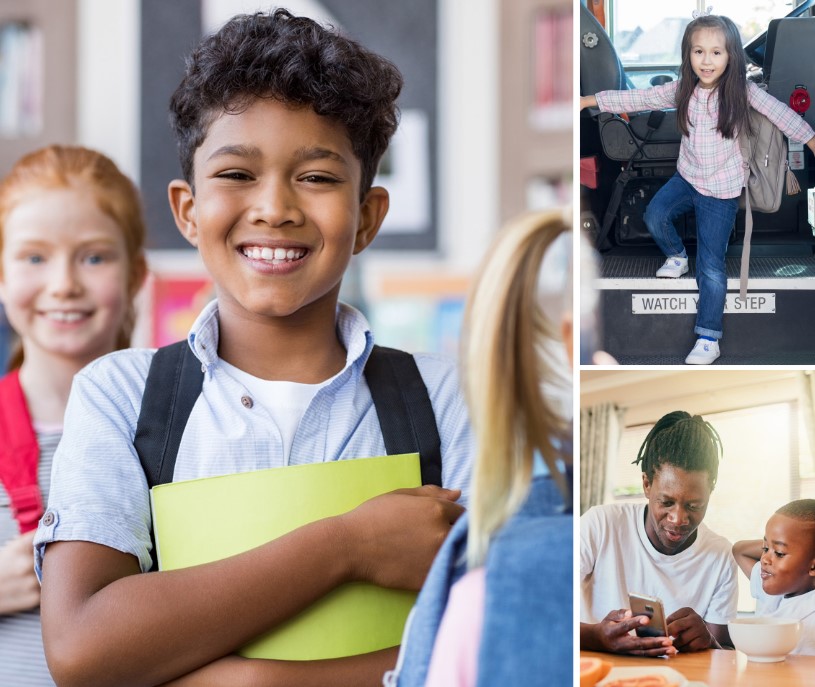California’s K-12 practitioners came together on May 5 for a daylong virtual event focused on how Expanded Learning Opportunities Grant funds, available through Assembly Bill 86, can be used to support student learning recovery and well-being.
A collaborative effort by the California AfterSchool Network, California Department of Education Expanded Learning Division and the California Collaborative for Educational Excellence, State Superintendent of Public Instruction Tony Thurmond delivered the keynote at “A Whole Child Approach to the AB86 ELO Grant.”
“I’m grateful for the focus on whole child and this approach to how we offset the impacts of the pandemic on our children,” Thurmond said. “So many things are important … but if we don’t start with the social and emotional needs of our children and our educators and their families and everyone who’s part of this work — including all our friends and partners in the expanded learning space — we will have missed an opportunity.”
As the end of the academic year approaches, Thurmond has been visiting schools as they reopen for in-person instruction and noted that it was the first time some learners had stepped foot on campus. Even for returning students, the environment is different due to masking and maintaining physical distance from friends and teachers.
“It’s not lost on me that while I’m grateful we’re back, we’re back in a way that still challenges things that we need. We’re humans and we need contact and connection,” Thurmond said, adding that he knows the experiences of the past 15 months and the actions taken in the near future will influence students’ lives in many ways.
To help address learning loss and opportunity gaps exacerbated by the pandemic, AB 86 allocated $4.6 billion to local educational agencies for extended learning time and supports, physical and mental health needs, social-emotional learning, community-learning hubs, training for staff and more.
Some people don’t like one-time money, Thurmond said, admitting that it isn’t his favorite either. This, however, is a critical moment where it is needed.
“We have a chance to begin to build back better,” he said. “As many have acknowledged, there were some things before that just weren’t working well enough for our students, so let us not lose sight of that when we talk about the achievement gap and digital divide and the number of students who came to school hungry or who have been impacted by trauma in some way. We have an opportunity to design now, out of necessity, programs that will address whole child needs.”
Thurmond also acknowledged some hesitancy he’s observed from LEAs who worry there is a looming “gotcha” moment or just aren’t sure how to spend it. He hoped the day’s sessions on topics including safety measures, partnerships with community organizations and higher education institutions, and the use of Medi-Cal to support staff and student well-being offered ideas they could use going forward.
Karen Pittman, co-founder and senior fellow at the Forum for Youth Investment, followed Thurmond at the keynote and added that though it is one-time funding, it’s very flexible and can be spent over the next few years.
Pittman explained strategies to “intentionally build forward together” based on recent research.
They include building back broader, bolder and smarter as well as focusing on adolescents and inequity data to better understand issues like absenteeism.
What does it mean to build back broader? “That really means that we have to continue to blur the lines between these different learning delivery systems and prioritize the connections that we have,” Pittman said. “Sometimes our language gets in the way. When we say school and after-school, or school and summer school, it sounds like they’re these very different things. Kids do formal learning in school and then they go into this different space called after school and they have fun. Well, why aren’t they having fun in school? We have to learn to really blur the lines and think about this as places where formal and nonformal and flexible learning happens and we’re appreciating learners.”
Building back broader involves knitting together learning settings to create “community-based learning-centered ecosystems.”
Building back smarter means stopping the focus on learning loss and affirming the ability of learners through an asset-based approach. “Clearly, we have to recognize that some children really did experience trauma, and we have to have recovery supports there,” Pittman said, offering a solution that includes focusing on relationship-rich opportunities to rebuild resilience and routines and leading with interest-driven opportunities.
Adolescents are the most determined learners but may not like the options currently in place, Pittman explained next. “While we are bringing them back, let’s not just bring them back to get caught up, let’s bring them back and ask how we can fix the system that wasn’t working well the first time,” she advised.
Pittman emphasized the importance of using data to spot inequities. After-school programs are not usually fully funded, though there is a chance now to use AB 86 funds as a way to address equity. “Families that are using out-of-school time programs have higher incomes and that’s true across all races and ethnicities. And when we are looking at quality, it goes with money,” Pittman said. “As we’re building back better, even in the expanded learning space, let’s double down on making sure that we’re not just providing more access but we’re also really addressing what it is that families and young people are looking for when talking about quality.”
All recordings will also be available on an ELO Convening Playlist on YouTube and are currently being uploaded.
More COVID-19 resources on topics like equity, food resources, mental health and more can be found on California AfterSchool Network’s website.





